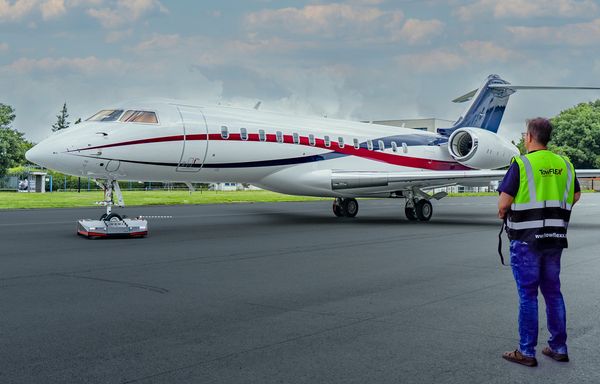On Monday afternoon, approximately 500kg of space debris fell onto a village in Makueni County in Kenya.
Although investigations into the matter are still ongoing, the debris was found to be a fragment of a rocket, namely, a separation ring. This large and heavy component is over eight feet in diameter and weighs more than 1,000 lbs.

“We want to assure the public that the object poses no immediate threat to safety,” the Kenya Space Agency said in an official statement issued Wednesday. “Our experts will analyze the object, use existing frameworks to identify the owner, and keep the public informed of the next steps and outcomes.”
While the debris was recovered and secured promptly by the Kenya Space Agency, investigations are currently ongoing into how this fragment ended up in a populated area. Whilst very rare, it seems this is not an unheard-of occurrence.
NASA has already had legal action taken against them — the most recent being in 2023 — when debris fell onto a Florida home. Earlier in 2024, the European Space Agency reported a satellite crashing into the Pacific Ocean.
How Does This Happen?
Space junk is increasing rapidly and continues to pose potential risks when it comes to space travel and — as of late it seems — for us here on Earth. There are currently over 10,000 active satellites in Low Earth Orbit (LEO) with multiple reports of collisions and explosions occurring all the time.

As such, thousands of fragments of debris are scattered out into space or into orbit itself, some of which make it back through the Earth's atmosphere. There have even been instances where some spacecraft have had to rapidly adjust their course to avoid debris.
Can We Get Rid of Space Debris?
According to Dr Vishnu Reddy, Professor of planetary sciences at the University of Arizona, the lack of regulation surrounding space junk is the biggest threat.
There is a theory called the Kessler Syndrome, brought about by NASA scientists Donald Kessler and Burton Cour-Palais. It states that, eventually, the increase of space debris would produce an ever-increasingly polluted orbital environment.
This can pose issues for operations such as GPS availability, and even launching new satellites. Whilst efforts are indeed underway globally to capture debris and deorbit defunct satellites and equipment, it seems, ironically, that we are slowly running out of space.
Important Aviation History Every Student Should Know » Spirit Airlines Projects Net Profitability by 2027 » Inside IndiGo's Game-Changing Order for 30 Airbus A350 Aircraft »
Comments (1)
 DArbeit
So NASA want to "deorbit" the ISS some years from now "safely"! They want to spend millions of our dollars to have it burn up(not guaranteed obviously from this story) on reentry over the ocean? Yeah right! How about using that millions of dollars to launch out into deep space or move it to a LaGrange point? At least that would get it out of Earth's orbit and not be a hazard to anyone on the ground.
DArbeit
So NASA want to "deorbit" the ISS some years from now "safely"! They want to spend millions of our dollars to have it burn up(not guaranteed obviously from this story) on reentry over the ocean? Yeah right! How about using that millions of dollars to launch out into deep space or move it to a LaGrange point? At least that would get it out of Earth's orbit and not be a hazard to anyone on the ground.
Add Your Comment
SHARE
TAGS
NEWS Space Junk Space Debris Orbit Kenya Kenya Space AgencyRECENTLY PUBLISHED
 This Delaware Firm is Saving FBOs Millions in Hangar Costs
When most people picture innovation in the aerospace industry, they envision new airline or aircraft startups that revolutionize the way people travel. But sometimes, the biggest revolutions happen on the ground. One Delaware-based aviation firm is quietly shaping the way airports, FBOs, and MROs move aircraft, and saving them millions of dollars in the process.
STORIES
READ MORE »
This Delaware Firm is Saving FBOs Millions in Hangar Costs
When most people picture innovation in the aerospace industry, they envision new airline or aircraft startups that revolutionize the way people travel. But sometimes, the biggest revolutions happen on the ground. One Delaware-based aviation firm is quietly shaping the way airports, FBOs, and MROs move aircraft, and saving them millions of dollars in the process.
STORIES
READ MORE »
 Air France Announces Paris-Las Vegas Nonstop Service
Air France is expanding its US operations with a new nonstop service from Paris to Las Vegas, significantly enhancing travel options between these two cities. This strategic move not only benefits travelers but also promises economic growth and cultural exchange, while positioning Air France as a key player in the competitive transatlantic market.
ROUTES
READ MORE »
Air France Announces Paris-Las Vegas Nonstop Service
Air France is expanding its US operations with a new nonstop service from Paris to Las Vegas, significantly enhancing travel options between these two cities. This strategic move not only benefits travelers but also promises economic growth and cultural exchange, while positioning Air France as a key player in the competitive transatlantic market.
ROUTES
READ MORE »
 PHOTOS: Inside Gulfstream's New G800, the World's Longest-Range Business Jet
Inside Gulfstream's new G800, showcased at NBAA-BACE 2025.
STORIES
READ MORE »
PHOTOS: Inside Gulfstream's New G800, the World's Longest-Range Business Jet
Inside Gulfstream's new G800, showcased at NBAA-BACE 2025.
STORIES
READ MORE »



